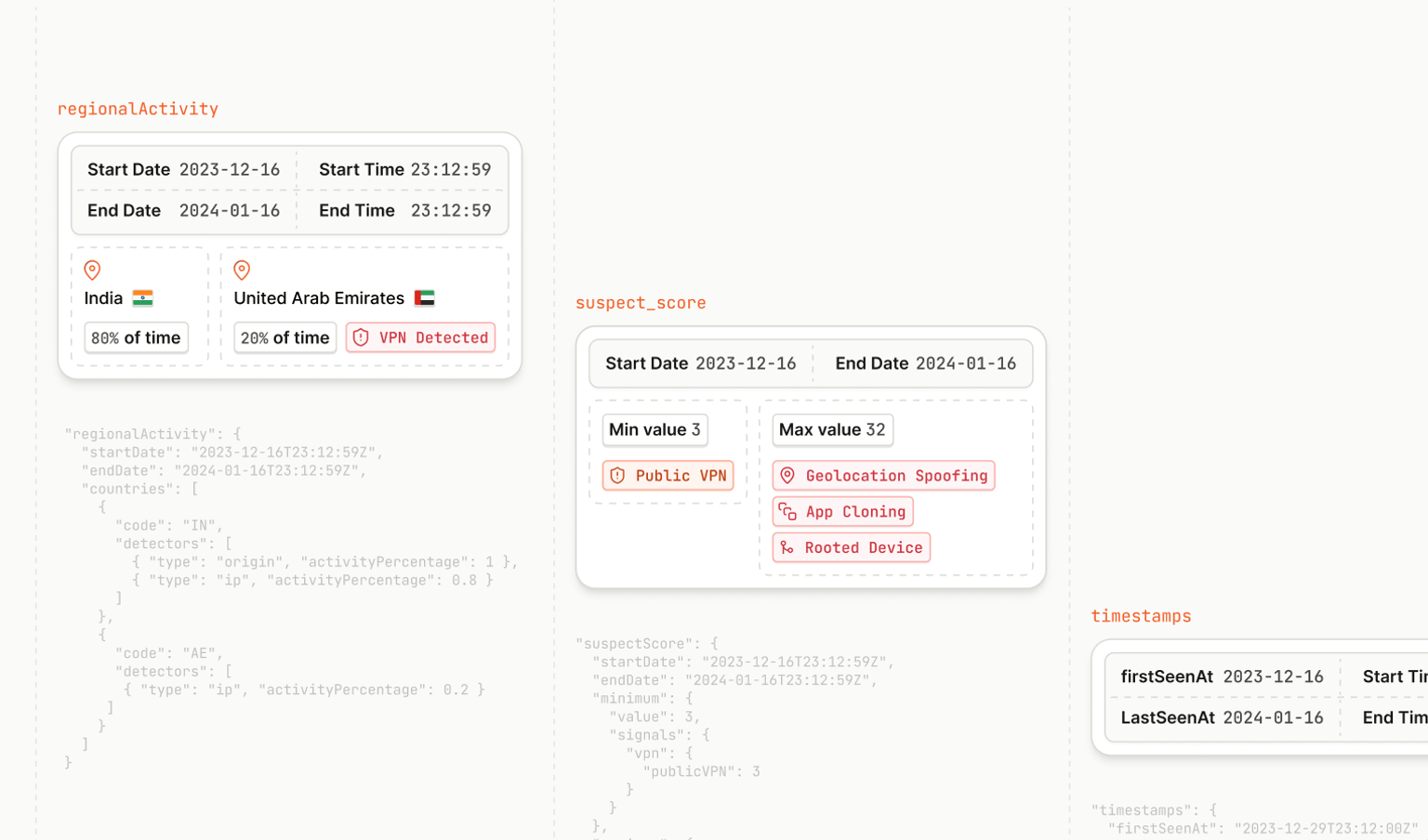When browsing the web, fraudsters often leave clues about their intentions. They might spoof their location, tamper with device settings, or access sites using automated bots. Combining these signals can help businesses identify potentially fraudulent actors and build robust fraud prevention strategies.
However, monitoring, analyzing, and interpreting these signals to predict intent can be complex and overwhelming. To address this, we're introducing Suspect Score, an aggregation of our Smart Signals to streamline your fraud detection process. This new score quantifies the suspiciousness of user activity into a single value that integrates into your existing security models, making fraud prevention as easy as ever.
What is a Suspect Score?
The Suspect Score considers various Smart Signals, including suspicious device settings, proxy usage, browser spoofing, and more. The value spans from 0 with minimal suspicion to as high as the sum of all weights for the highest level of suspicion.
Each signal is assigned a weight according to the global probability of it being triggered. Smart Signals that are unusual or more uncommon carry greater weights, while those with higher probabilities of being seen have weaker weights. These weights vary based on the user's platform since different platforms have different visitor patterns and signal probabilities.
View our documentation for a detailed breakdown showing the weights for each Smart Signal across web, Android, and iOS platforms.
When Should You Use It?
The Suspect Score is an ideal starting point for customers new to fraud prevention or those still familiarizing themselves with our Smart Signals. With multiple signals to consider, businesses can struggle to identify which ones carry the most weight or significance. The Suspect Score provides an instant idea of the level of suspiciousness in user activity, allowing businesses to flag potential fraudsters quickly ahead of spending more time and resources analyzing individual signals.
Additionally, the Suspect Score can be used as input into custom security rules for real-time blocking or behavior-based analysis. Our Smart Signals are constantly updated and refined based on real-time data, providing the most accurate fraud detection capabilities.
How to Get Started
All customers with access to our Smart Signals will automatically have Suspect Scores. The score is available through our webhooks and the Server API at the existing Events endpoint as a new property, making it easy to integrate into your existing fraud prevention workflows. After you make an identification request, use the request ID to call the endpoint. You will see the new Suspect Score under suspectScore.
{
"products": {
...
"suspectScore": {
"data": {
"result": 0
}
}
}
}After obtaining the Suspect Score, it can be used as a part of your decision process when visitors interact with your site. Given the unique nature of each site, customer needs, and user base, we suggest experimenting with the Suspect Score and establishing personalized thresholds for identifying suspicious activity.
Conclusion
At Fingerprint, we strive to make intuitive products that help you prevent fraud and provide great user experiences. The new Suspect Score is another step towards streamlining fraud prevention, making it easier for businesses to identify potential fraudulent activity and take swift action to protect their platforms and customers.
Want to see how Suspect Score can enhance your fraud detection capabilities? Contact us today to learn more about our Smart Signals, or visit the documentation and start a free trial to try it out yourself.
FAQ
The Suspect Score, ranging from 0 to the sum of all weights, measures suspicion based on various Smart Signals. These include suspicious device settings, proxy usage, browser spoofing, and more.
Each signal is weighted according to its global trigger probability. Unusual or rare Smart Signals carry more weight, while more common signals have less. These weights adapt to the user's platform, reflecting the differing visitor patterns and signal probabilities across platforms.



